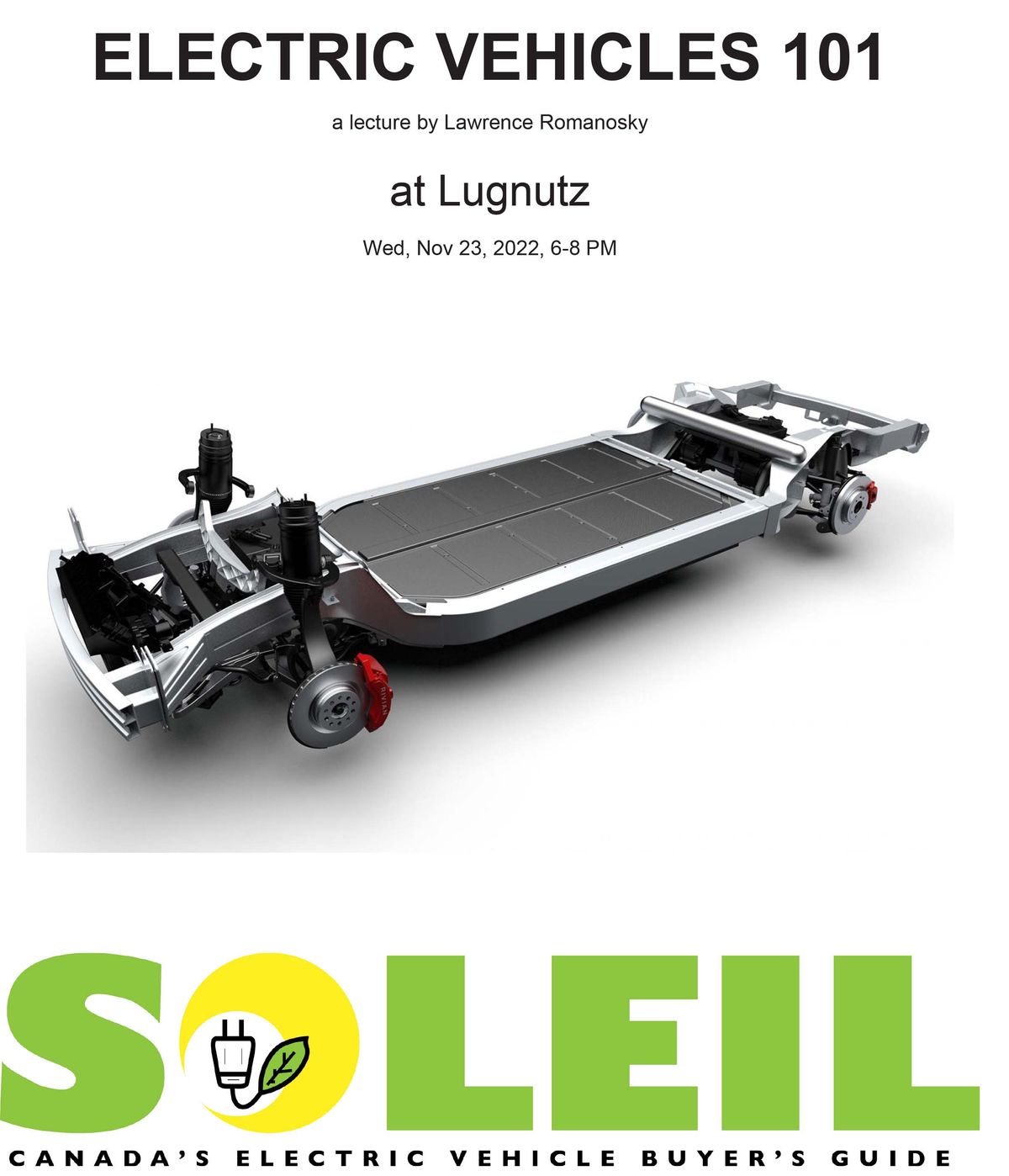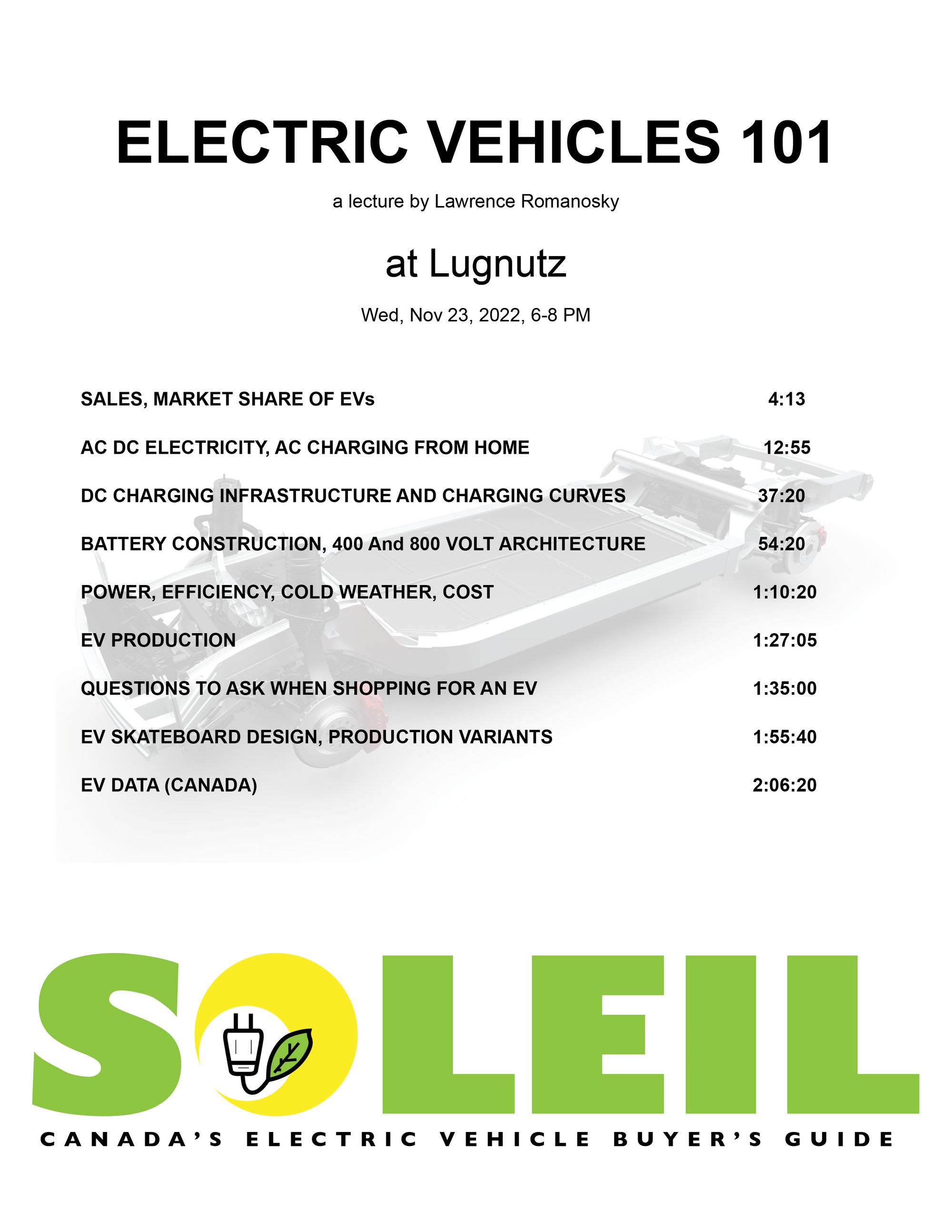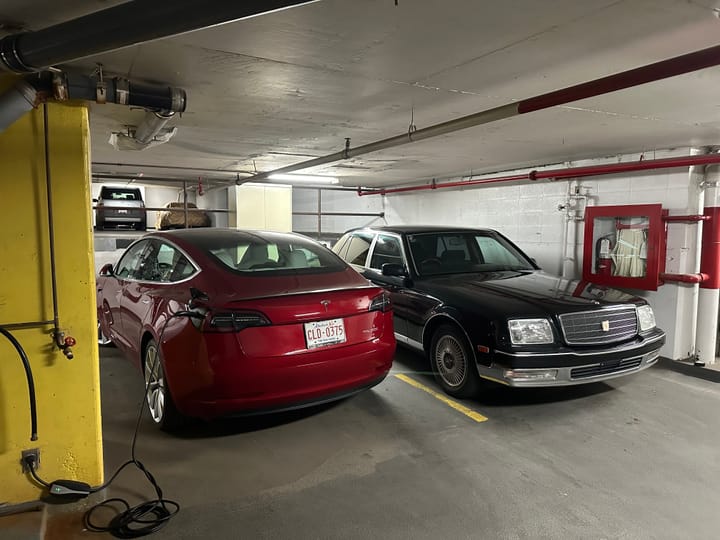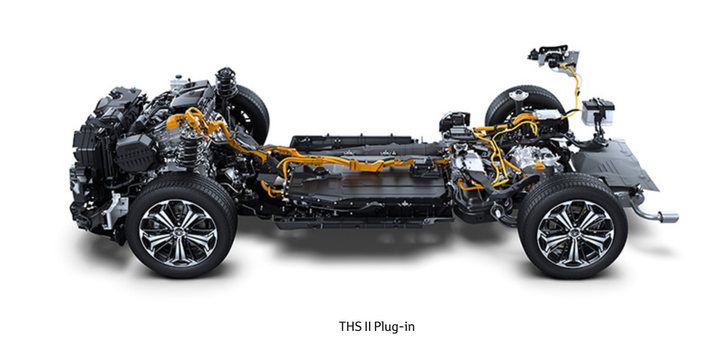Electric Vehicles 101 Seminar: 2hr Deep Dive

An in-depth seminar - 2 hours long - that takes a deep dive into e-mobility. Batteries, range, efficiency, charging infrastructure etc. are discussed in detail

On Wednesday this week, I’m going to host an EV seminar at Lugnutz. This will basically be a “Electric Vehicles 101” lecture that will aim to get the layperson fully up to speed with all matters related to the ownership and operation of an electric vehicle. It will be about a two hour presentation with an EV walk-around and a question period. Here is the ten minute version of the material that I plan to cover:
Sales
EV’s now account for about 13% of global vehicle sales. There are now about 16.5M electric cars on the road globally. Tesla will make and sell about 1.3M cars in 2022. VW has just sold their 500,000th ID series electric car, one year ahead of schedule. China has the largest EV market with an EV market share of 22%. Europe is now selling about 20% EVs. The North American share is about 6%. Canada is about 5%. Within Canada, BC and Quebec sell the most EVs, and have the highest market share. The Vancouver area sees EV sales at about 20%. In Saskatchewan, the EV sales percentage is less than 1%. Many manufacturers only sell their EVs into BC, Ontario and Quebec, so not every EV on sale in Canada is available in Alberta. BC has the highest EV adoption rate per capita, even greater than California which accounts for half of the electric cars sold in America.
Supply
Electric vehicles are hard hit by the recent supply chain challenges; particularly the lack of semi-conductor chips which they use a lot of. There are very few EVs in dealer showrooms, and what canceled orders or demos there may be are often marked up substantially over list price. Dealers will generally sell for MRSP on factory orders, which can take anywhere from 4 months to several years to arrive, depending on the make and model. Used EVs that are several years old still sell for the price they were when new, or above. Some manufactures are taking orders only on line, and awarding them based on a lottery system.
Chinese and other Asian manufacturers are ramping up EV production at an astonishing rate with vertically integrated supply chains that give them better control over production. These companies are bringing in the best European styling talent and manufacturing equipment, manufacturing their own chips, and even buying their own vessels to transport the cars.
Legacy manufacturers struggle with the software that EVs require. EV start ups struggle with fit and finish and build quality. Large consumer electronics companies are just as capable at making EVs as legacy auto manufacturers. Expect many more entrants into EV marketplace in the coming years who will be well able to satisfy demand.
Design
Today’s EVs are mostly designed around a ‘skateboard’ platform which comprises a structural battery pack as the floor with one or two motor-axle units on either end. These platforms are variable for width, track, wheelbase and height. They can accept different size battery packs and different sized motors and inverters. One platform can support an entire family of sedans, cross-overs and SUVs with ‘mix and match’ components as they suit various brands and trim levels. Skateboard platforms can be purchased outright by start ups and other manufactures who wish to save the development time and expense. Most manufacturers buy all of these components from Chinese suppliers. The entire design and construction of vehicles can be subcontracted to companies like Magna, meaning some start ups don’t have their own manufacturing facilities.
Electricity
EVs use both AC and DC forms of electricity. They are not interchangeable, but one can be converted to the other and back again. The motors that power EVs and the energy recuperated from deceleration are AC. The electronics and electrical accessories in the EV are DC. The batteries hold DC electricity. The car can accept AC or AC charging.
Different components of the car operate at different voltages. The EV is full of ‘black boxes’ that continuously convert one form of electricity to the other, step up or down the voltage, and send each part of the car what it needs. Any transmission or conversion of electricity generates heat, which can be substantial. This needs to be managed carefully by on board electronics and liquid cooling systems. Electronics, particularly batteries, don’t like being cold either, so heating systems are needed as well to keep all the electrical components operating in an optimal thermal window.
DC is the only form of electricity that can be stored in a battery. AC electricity is what is sent to your home through the electrical grid. The electrical grid is very high voltage, but this power is ‘stepped down’ to 240V for residential service. The amount of amount of 240V power that a home can accept is measured in Amps. Residences typically have a 100Amp or 200Amp service. This is broken down into smaller circuits of either 240V or 120V on the home electrical panel. The 240V circuits typically have 30Amp-50Amp breakers and the 120V circuits typically have 15Amp breakers. The stove, dryer and A/C will use the larger 240V circuits and everything else will use 120V.
Power: Watts = Amps X Volts
The power coming out of the plug is measured in Watts or Kilowatts (1000W). A typical 120V circuit will have a 15 Amp breaker. This will give total power of 120V x 15A = 1,800W or 1.8kW. Electrical code determines that each electrical circuit should only carry 80% of the maximum current. For an extended draw .8(1.8kW) = 1.4kW is the safe power output for a 120V circuit with a 15Amp breaker. This is enough power to light 14 100W light bulbs, or supply your EV with 1.4kW of power.
A typical ‘Level 2’ home charger will use 240V and a 50Amp breaker, giving 9.6kW after the 20% safety margin is taken into account. This is close to the maximum that most EVs can accept from a home AC charger, though they can accept much faster rates of charge from a DC charger (Level 3) as the electricity can go straight into the battery without being converted. Peak DC charge rates can be anywhere from 50kW to 300kW, though average rates are variable and generally much lower.
.745kW = 1 hp or 1kW = 134hp
Both Horsepower and the Kilowatt measure work. In an ICE engine hp is computed by multiplying torque x engine revolutions. A Kilowatt is computed by multiplying Amps x Volts. A Kilowatt is the measure of how powerful an electric motor is. A 100kW motor develops the equivalent of 134hp. A Kilowatt is also the measure of how fast the battery is charging (or discharging).
A Kilowatt Hour is a quantity of power. It is the amount of electricity necessary to light ten 100W light bulbs for one hour. This is the measure of the amount of electricity you are charged for on your utility bill. It is also the measure of how much electricity is in a battery.
Kilowatt Hour per 100km is a measure of consumption. Variations on this are Watts per km/mi or kW per 100 mi.
Mpg-e and Le/100km are also measures of consumption. These equate the energy contained in 1 US gallon of gasoline (33.7kWh) and estimate the distance the EV can go using this amount of energy. The reason that most EVs have MPG-e values in the 100 range, while the ICE version of a comparable vehicle might be 30 MPG, is because the electric machine is inherently more efficient and will travel much further on a given amount of energy. The combustion engine wastes most of its energy to heat.
Efficiency
Efficiency can be defined as the relative amount of energy necessary to propel a vehicle at a certain speed. There are two main forces that are act against the car while it is in motion. One is friction, and the other is aerodynamic drag.
Friction is the vehicle’s rolling resistance, which is mostly a function of the vehicle weight and the tire size, pressure and compound. Aerodynamic drag is a function of the vehicle’s shape, and frontal area. The choice of tire can influence range by more than 10%.
An EV will use anywhere between 10kW and 20kW of energy to keep itself in motion at 100km/hr. To achieve an overall electrical consumption, add to this the power to keep the cabin at a comfortable temperature and operate all the vehicle accessories and comfort/convenience options (2-4kW). Add to this the power and frictional losses. A typical EV that may have a consumption of 18kWh per 100km might use 1/3 of this amount on each of (1) overcoming road friction, (2) overcoming aerodynamic drag and (3) Powertrain/electrical losses and climate control.
Total consumption for EVs varies between the most efficient aerodynamic cars with low rolling resistance tires at about 15kWh/100km to large ‘expressions of freedom’ trucks at 45kWh/100km. A truck pulling a large trailer can use 80kWh/100km or more.
Batteries
Battery packs for most EVs range in size from 60kWh to 120kWh for cars, and up to 225kWh for large EV trucks. Matching the most efficient EV with the largest battery pack can give range in excess of 700km. Most EVs with the largest of their battery options will try to make their usable battery storage equal to 4X the consumption, giving a maximum range of about 400km at highway speeds. Since most people drive less than 100km per day, this is generally more than enough.
The cost of manufacturing EV battery packs has come down substantially, and is now in the region of $USD135 per kWh. A 100kWh battery pack costs about $13,500 today. The type of battery cells, how they are laid out in the battery pack, how they are heated and cooled, and how they are wired together influence a wide variety of performance factors including, but not limited to, voltage, energy density, charge rate, discharge rate, durability, ease of service, ease of manufacture and cost. Dead batteries can be ground up, the metals separated out, and recycled.
Cold Weather
EVs are very sensitive to temperature - much more so than an ICE vehicle. Consumption can double, and range half in the very worst of Canadian driving conditions. Also DC charging times are much slower, though home charging is not materially affected. That said, most EVs will have a range of 300km-400km in perfect conditions, giving range of at least 150km in the worst weather, which is much further than most people drive in a day anyway. Also, the ability to electrically heat the cabin, de-mist the windows and activate the seat and steering wheel heating remotely via your phone means you can always get into a warm car, no matter what the weather is like.
Charging
AC home charging is straight forward, linear and reliable. An EV that travels less than 50 km per day and gets consumption of 20 kWh/100km will need electricity to be replenished at the rate of 10kWh per day. This is possible with a 120V circuit that can give 1.4kW - it would take about 7 hours to charge every day. But if you ran a 80kWh battery down to 0, it would take nearly 60 hours to charge back up to 100%.
A ‘Level 2’ charger will use a 240V circuit and, depending on the amperage, will charge the EV at a rate of 5.8kW (30Amp), 7.7kW(40Amp), 9.6kW(50Amp) or 11.5kW(60Amp). Most current EVs have an on board charger than can accept a maximum of 11kW. A few EV’s can accept up to 19kW which would require a 100Amp service. A 40 or 50 Amp service should be able to charge most EVs to 100% overnight, no matter what charge they started with. Home energy management software and programming can apportion electrical consumption to various uses so that additional electrical capacity does not have to be brought into the home. The costs of installing a 'Level 2' charger are generally in the ‘few thousand dollar’ range.
DC fast charging is much more complicated and variable. Thermally managing high voltage charging is necessary to make sure that nothing overheats and catches fire. Putting too much charge into a battery at the wrong part of its charge cycle or at the wrong temperature can damage it. Considerable safeguards are put in place by the charge stations and the vehicle manufacturer to carefully control high voltage charging. The peak charging rate only occurs at a portion of the charge session, if at all, depending on numerous factors.
Commercial DC charging stations can dispense electricity anywhere from 50kW to 350kW. EVs can either run at 400V or 800V. Charging stations can run at 400V or 800V. This means that your EV may have to step up or step down the voltage from the charger at the expense of the charge rate. Different EVs are designed to accept different DC charging rates, and vary from 50kW to 300kW.
Every DC charging session will have a unique ‘charge curve’ that maps how many kW the battery accepts at what ‘state of charge’. Generally the on board electronics will ramp up the charge rate rapidly from 0-20% SOC, keep it at or near the maximum until about 50%, slowly decrease it to 80%, and then dramatically slow it from 80% to 100%. This is in perfect conditions. If the battery is too hot or too cold it won’t charge anything like the maximum. This is why manufacturers always quote 20%-80% charge times - this is when the battery is primed to accept the fastest charge. To get the advertised charging times conditions have to be perfect, and they seldom are. Actual DC charge times vary considerably from vehicle to vehicle, and from charging session to charging session.
Certain EVs have the ability to preheat the battery pack so that it is at an optimal temperature to accept a fast DC charge. Often this is integrated into sophisticated route planners that prepare the car for the next charging session. The EV can also be driven aggressively to heat up the battery pack prior to charging. In Canada, DC charging stations charge by the minute, so the more kW the car can accept, the less the cost of the electricity.
What this means is that it is very difficult to predict how long it is going to charge your car when you roll into a DC fast charger. Adding to the frustration, the DC fast charge infrastructure is in its infancy, and many of the chargers do not work optimally, or are out of service.
Tesla has their own proprietary DC fast charge network, and unique hardware. The Tesla ‘Supercharger’ network is far denser and more robust than the other DC fast charge network of providers. Driving a Tesla long distance, and charging on the road, is currently far easier than anything else. That said, DC charging is really only available in large urban areas and along the Trans Canada and other major highways. In less populated areas in Canada, long distance travel by EV just isn’t feasible.
If long distance EV travel is important to you, a deep dive into this area of EV ownership is advisable.
Cost of Operation
Right now premium gas is $1.70 per litre. A kWh of electricity is about $.13/kWh. Even a fuel efficient ICE vehicle will use 10L to go 100km and this will cost $17.00. The equivalent size EV would use 20kWh to go the same distance, costing $2.60 if charged from home. An EV will generally never need brakes, and requires almost no servicing. Most drivers would save at least $3k per year in operational expenses if they made the switch to electric. There are many new EVs that have purchase prices in the $50k-$70k range, which makes them attainable to a large number of people.
Summary
So that is the short version!
The truth is that EV ownership requires a little more effort than the ICE vehicle which everybody is familiar with and nobody has to think about. There are some things that an EV just won't do at this time, and it is important to manage those expectations. There are huge benefits that can be realized.
As an EV owner and somebody who has studied automobiles my entire life, I can say - unequivocally - that the EV is a better machine for doing 90% of the things people need a car to do. If you have a place to charge it, and if you drive it in the city, it is a better choice. That said the EV maybe shouldn't be your only car - in Alberta we are not there yet with the DC fast charge infrastructure to make long distance travel feasible for most people.
If you, or someone you know, would benefit from an expanded and more digestible version of the above information, please come to the EV seminar I am hosting at Lugnutz.
Lawrence Romanosky, Calgary, Canada
Lromanosky@me.com, 403-607-8625



Comments ()